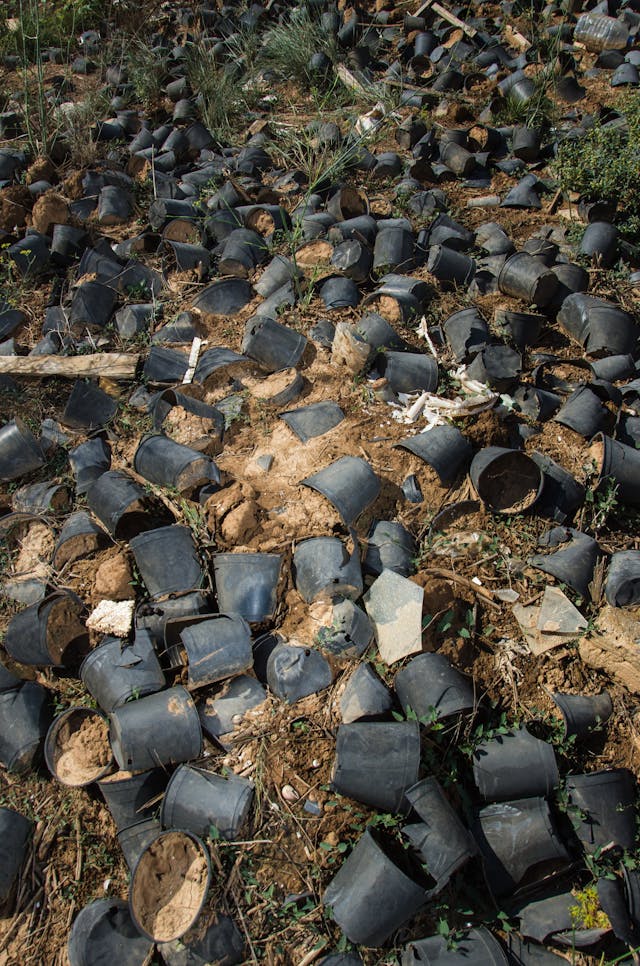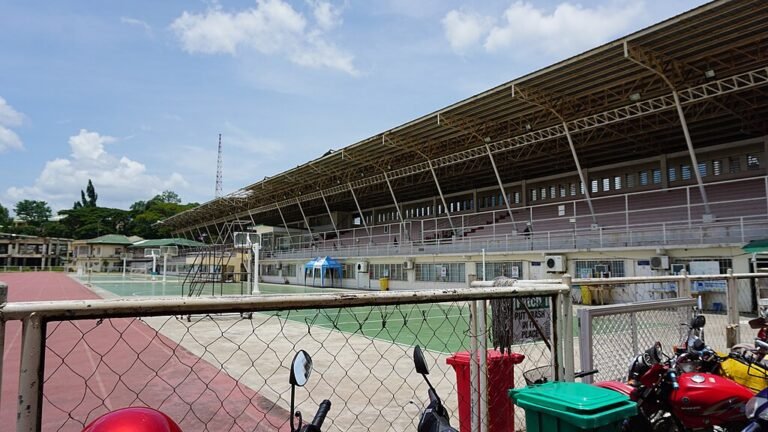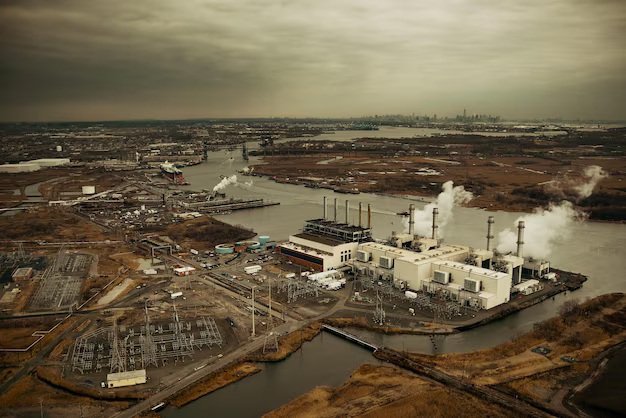Chemical Recycling of Agricultural Plastics: A Comprehensive Guide
Agricultural plastics—such as mulch films, greenhouse covers, irrigation pipes, and silage wraps—have transformed modern farming by boosting crop yields and improving resource efficiency. Yet, their extensive use brings serious environmental concerns, particularly around disposal and degradation. Traditional recycling methods often struggle to cope with these plastics, especially when they’re contaminated with soil, pesticides, or organic residue.
Chemical recycling offers a promising alternative. By breaking down complex plastic polymers into their original monomers, it opens the door to creating new products from what would otherwise be waste. This guide takes a closer look at chemical recycling in the agricultural sector, examining how it works, its advantages and limitations, and how it’s being applied in real-world farming scenarios.

In This Article
- The Scope of Agricultural Plastic Use
- Understanding Chemical Recycling
- Real-World Applications and Case Studies
- Challenges in Recycling Agricultural Plastics
- Actionable Recommendations: Implementing Effective Chemical Recycling Practices
- Future Outlook
- Expert Insights: Navigating the Complexities of Chemical Recycling in Agriculture
- Conclusion
The Scope of Agricultural Plastic Use
Global Consumption of Agricultural Plastics
Agriculture has increasingly relied on plastic products to enhance productivity. According to the Food and Agriculture Organisation (FAO), in 2019, approximately 12.5 million tonnes of plastic were used in plant and animal production worldwide, with an additional 37.3 million tonnes utilised in food packaging. A significant portion of this plastic is employed in films for mulching, silage production, and greenhouses. China stands as the largest consumer, accounting for nearly six million tonnes annually.
The demand for agricultural plastics is projected to increase by about 50% by 2030, driven by the need to boost crop yields and adapt to climate change. However, the environmental implications of this trend are becoming increasingly evident.
Environmental Impacts of Agricultural Plastics
While plastics have brought benefits to agriculture, their accumulation poses several environmental risks:
- Soil Health Degradation: Microplastics can alter soil structure, reduce fertility, and affect microbial communities. Studies have shown that high concentrations of microplastics in soil ecosystems affect soil quality by altering its structure, bulk density, and water-holding capacity. Additionally, microplastics can adsorb and transport contaminants, such as heavy metals and other pollutants, further impacting soil health.
- Water Contamination: Degraded plastics can leach harmful chemicals into water sources. Microplastics have been confirmed in groundwater, posing risks to both ecosystems and human health.
- Wildlife Threats: Animals may ingest plastic debris, leading to health complications or death. According to a study, microplastics have been found to hinder the survival, growth, and reproductive rates of soil fauna, posing potential health risks.
Understanding Chemical Recycling
What Is Chemical Recycling?
Chemical recycling is an innovative approach to managing plastic waste. Unlike traditional mechanical recycling, which involves melting and reshaping plastics, chemical recycling breaks down plastic polymers into their fundamental building blocks—monomers or other basic chemicals. This method is particularly effective for handling contaminated or mixed plastic waste, such as agricultural plastics, which are often unsuitable for mechanical recycling.
Key Technologies in Chemical Recycling
1. Pyrolysis
Pyrolysis involves heating plastics at high temperatures in the absence of oxygen, resulting in the decomposition of plastic materials into oil and gas. This process can convert various types of plastic waste into fuel. For instance, a Mexican startup, Petgas, has developed a machine that processes 1.5 tonnes of plastic waste per week to produce approximately 1,350 litres of fuel through pyrolysis.
2. Gasification
Gasification converts plastic waste into synthesis gas (syngas), a mixture of hydrogen and carbon monoxide, through partial oxidation at high temperatures. This syngas can be utilised to produce chemicals like methanol or fuels. Research indicates that gasification is a promising method for recycling mixed and contaminated plastics, offering a versatile solution for plastic waste management.
3. Depolymerisation
Depolymerisation breaks down polymers into their monomers using chemical reactions, enabling the production of new plastics with properties similar to virgin materials. This process is particularly effective for recycling plastics like PET. Companies like Loop Industries have developed technologies that depolymerise low-value waste PET into monomers, which can then be repolymerized into high-quality PET resin.
Real-World Applications and Case Studies
Mura Technology’s HydroPRS: Turning Waste into Resource
Mura Technology, based in the UK, has developed HydroPRS (Hydrothermal Plastic Recycling Solution), a process that uses supercritical water—water at high pressure and temperature—to break down mixed plastic waste into valuable hydrocarbons. This method can handle plastics often deemed unrecyclable, such as agricultural films and multilayer packaging.
In October 2023, Mura opened the world’s first commercial-scale HydroPRS plant in Teesside, UK, with an initial capacity to process 20,000 tonnes of plastic waste annually. The facility aims to expand its capacity to over 60,000 tonnes in the future. The process is energy-efficient and produces fewer pollutants compared to traditional methods like pyrolysis. Notably, it can recycle plastics multiple times without degrading quality, contributing to a circular economy.
Carbios’ Enzymatic Recycling: A Biological Approach
French company Carbios has introduced an enzymatic recycling process that uses engineered enzymes to depolymerise PET plastics into their original monomers. This method is effective on various PET waste forms, including colored and complex plastics, achieving a 90% degradation rate within 10 hours.
Carbios is scaling up this technology, with plans to handle over 130 tonnes of plastic daily by 2025. The process allows for the production of 100% recycled and recyclable PET products, maintaining the quality of virgin materials. This innovation supports a sustainable, circular approach to plastic use.
Challenges in Recycling Agricultural Plastics
Recycling agricultural plastics is a complex task, fraught with several significant challenges that hinder effective waste management.
Contamination Issues
Agricultural plastics, such as mulching films and irrigation tubes, often become heavily contaminated with soil, pesticides, fertilisers, and organic matter. According to GRID-Arendal, these contaminants can constitute up to 40–50% of the plastic’s weight, making the recycling process both technically challenging and economically unfeasible. The presence of such impurities not only complicates the recycling process but also poses environmental risks if not properly managed.
Collection and Logistics
The dispersed nature of farms and the bulky characteristics of plastic waste present logistical hurdles in collection and transportation. In many regions, especially rural areas, there is a lack of infrastructure to facilitate the efficient gathering and processing of agricultural plastics. This often leads to improper disposal methods, such as open burning or abandonment in fields, contributing to environmental pollution.
Economic Viability
The recycling of agricultural plastics, particularly through chemical methods, involves high costs related to infrastructure and processing. While advancements in technology and increased demand for recycled materials are gradually improving economic feasibility, significant investments are still required to make these processes viable on a larger scale. Additionally, a study suggests that the lack of standardised regulations and incentives further complicates the economic landscape of agricultural plastic recycling.
Actionable Recommendations: Implementing Effective Chemical Recycling Practices
For Farmers and Agricultural Stakeholders
- Adopt Best Practices for Plastic Use: Implement strategies to minimise plastic use, such as utilising biodegradable alternatives and optimising plastic applications to reduce waste.
- Participate in Collection Programs: Engage with local recycling initiatives like the Recycling Agricultural Plastics Program (RAPP) in New York State, which collaborates with farmers to collect and recycle used agricultural plastics.
- Educate and Train Staff: Provide training on proper handling and disposal of agricultural plastics to ensure compliance with recycling protocols and reduce contamination.
For Policymakers and Regulatory Bodies
- Develop Supportive Policies: Create regulations that incentivise chemical recycling, including subsidies for recycling facilities and mandates for recycled content in agricultural products.
- Invest in Infrastructure: Allocate resources to develop and maintain recycling infrastructure, ensuring accessibility for rural and farming communities.
- Standardise Guidelines: Establish clear standards for the collection, processing, and certification of recycled agricultural plastics to streamline operations and build trust in recycled products.
For Researchers and Innovators
- Advance Recycling Technologies: Focus on developing chemical recycling methods that can handle contaminated and mixed plastic waste typical in agriculture, enhancing efficiency and scalability.
- Collaborate Across Sectors: Engage in multidisciplinary partnerships to integrate chemical recycling solutions into existing agricultural systems and supply chains.
- Monitor Environmental Impact: Conduct life cycle assessments to evaluate the environmental benefits and potential drawbacks of chemical recycling processes, guiding sustainable development.
Future Outlook
Technological Advancements
Recent innovations, such as Aduro Clean Technologies’ Hydrochemolytic Technology (HCT), are exploring the feasibility of recycling on-farm plastic waste through chemical processes. This collaboration with Cleanfarms aims to assess the technical and commercial viability of such methods. While these advancements are promising, scalability and economic viability remain significant challenges.
Policy and Regulatory Support
The growth of chemical recycling is closely tied to policy frameworks. The World Plastics Council emphasises the importance of policy acceptance of the mass balance approach to integrate recycled content into existing supply chains. However, unclear regulations can deter investment and slow progress.
Environmental Considerations
While chemical recycling offers a solution to plastic waste, it’s essential to consider its environmental impact. A report from the Centre for Climate Integrity highlights concerns about the energy-intensive nature of advanced recycling processes and their potential to produce fuels rather than new plastics. Balancing the benefits with environmental costs is crucial.
Expert Insights: Navigating the Complexities of Chemical Recycling in Agriculture
In conversations around the future of chemical recycling in agriculture, Dr. Katrina Knauer, a leading polymer scientist, stressed that while chemical recycling offers promise, it cannot be seen as a standalone solution. She emphasised that its success hinges on a much broader transformation, involving improvements in collection infrastructure, supportive policy frameworks, and market-driven incentives. According to Dr. Knauer, chemical recycling must be integrated into a larger, systemic effort if it is to have a meaningful impact on agricultural plastic waste.
Adding to the discussion, Richard Thompson, who previously worked with the Food and Agriculture Organisation (FAO), pointed out the particular difficulties of dealing with plastics used in farming. He explained that agricultural plastics tend to be heavily contaminated and widely scattered across rural landscapes, making effective collection and recycling extremely complex. Thompson highlighted the need for specialised, context-specific approaches rather than one-size-fits-all solutions to address these logistical challenges successfully.
Conclusion
The journey toward effective chemical recycling of agricultural plastics is complex. It requires technological innovation, supportive policies, and a commitment to environmental sustainability. As we navigate this path, collaboration among stakeholders—farmers, scientists, policymakers, and industry leaders—is vital. Together, we can work toward a future where agricultural practices are both productive and environmentally responsible.







